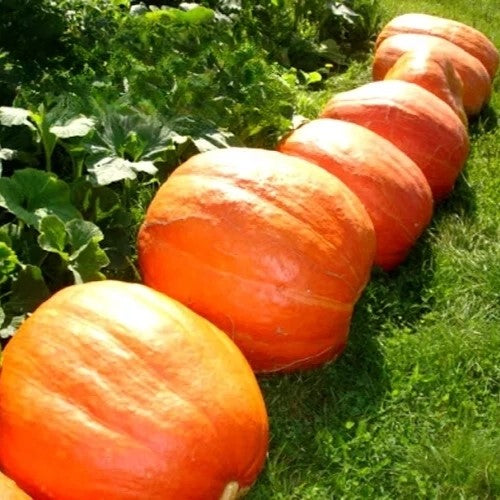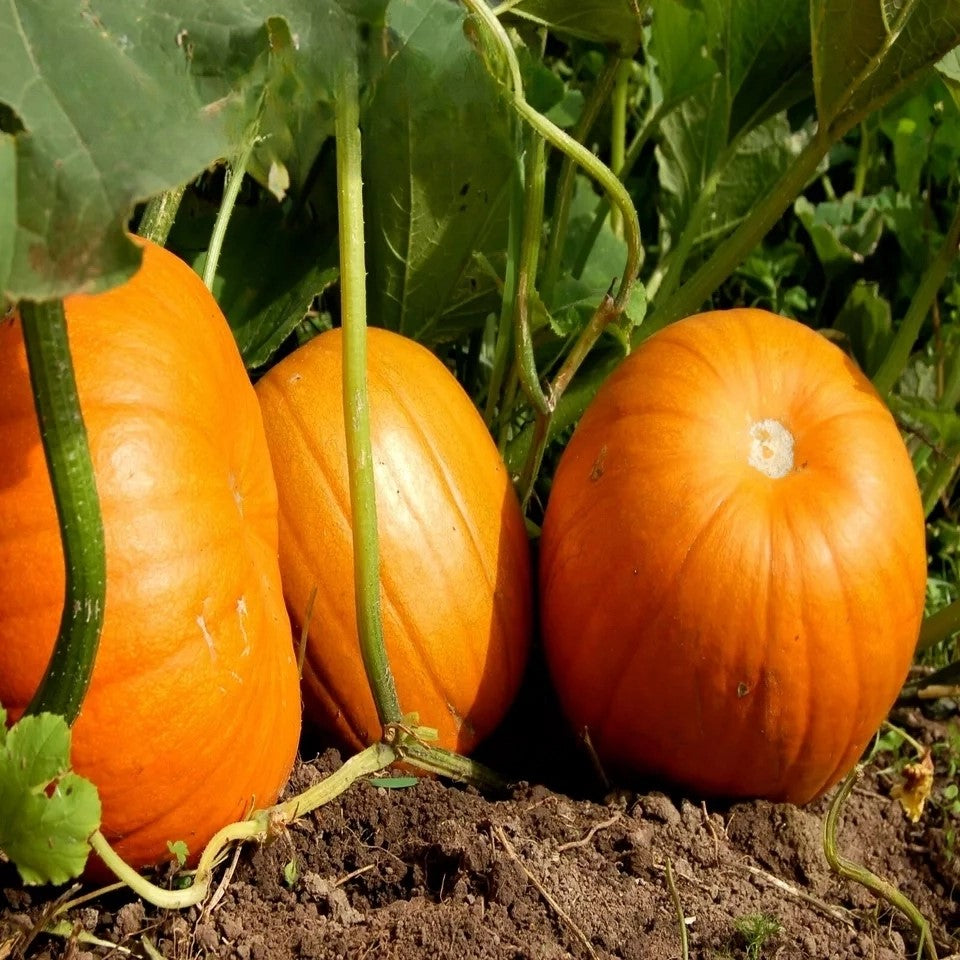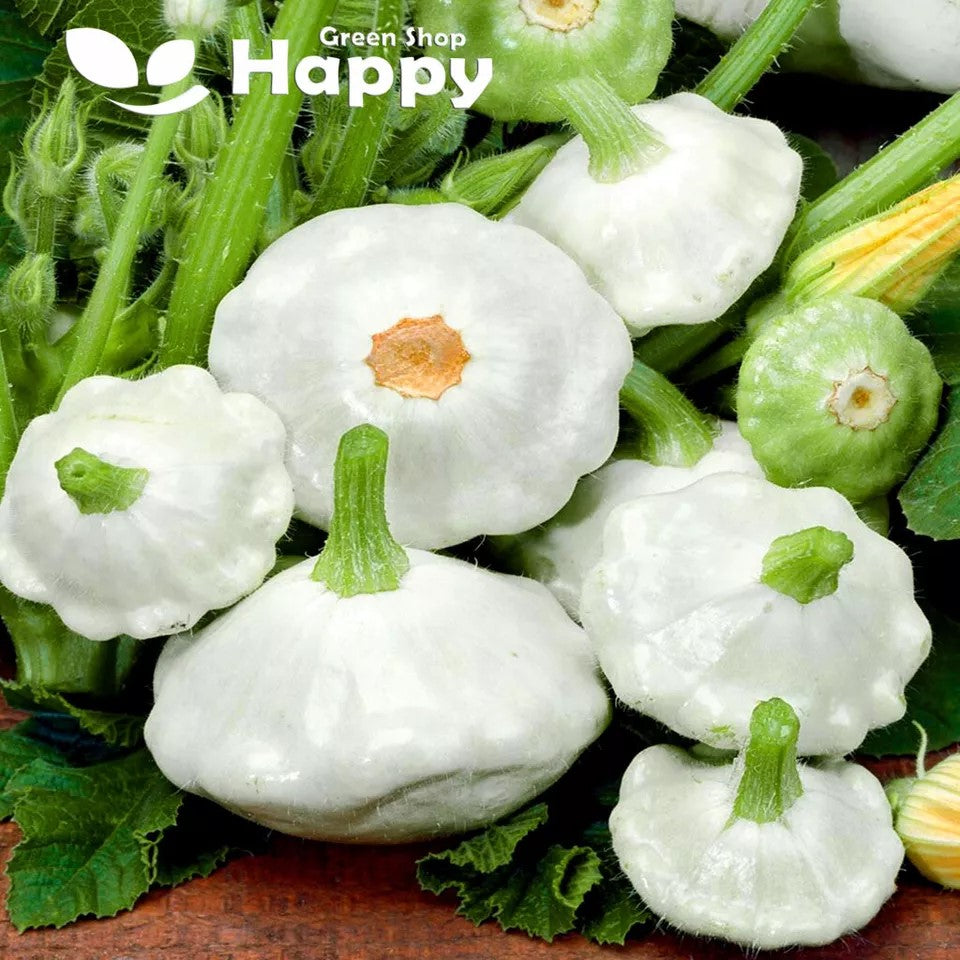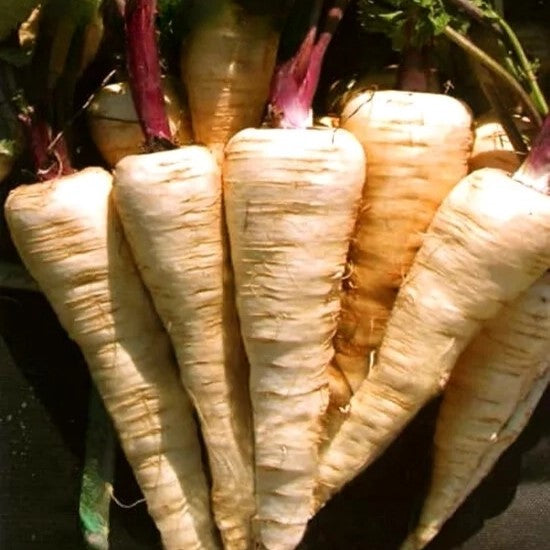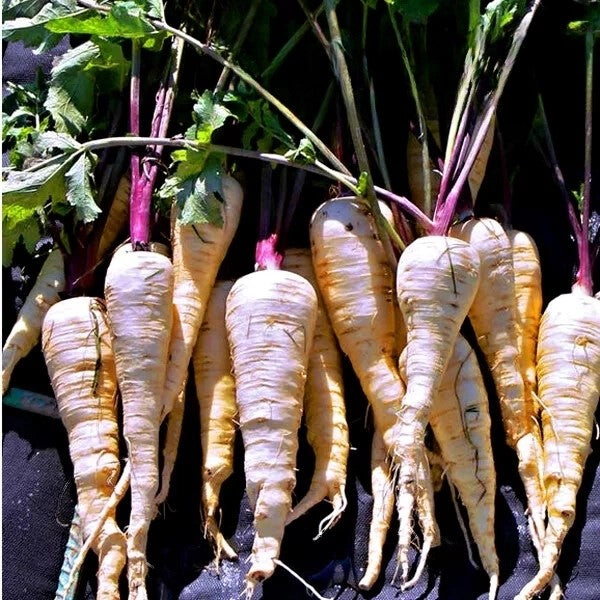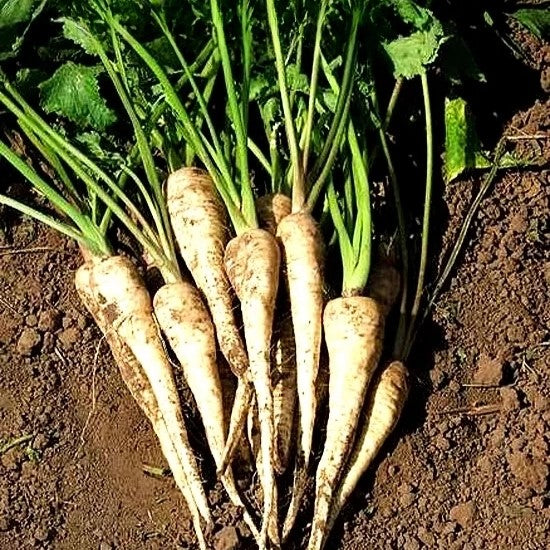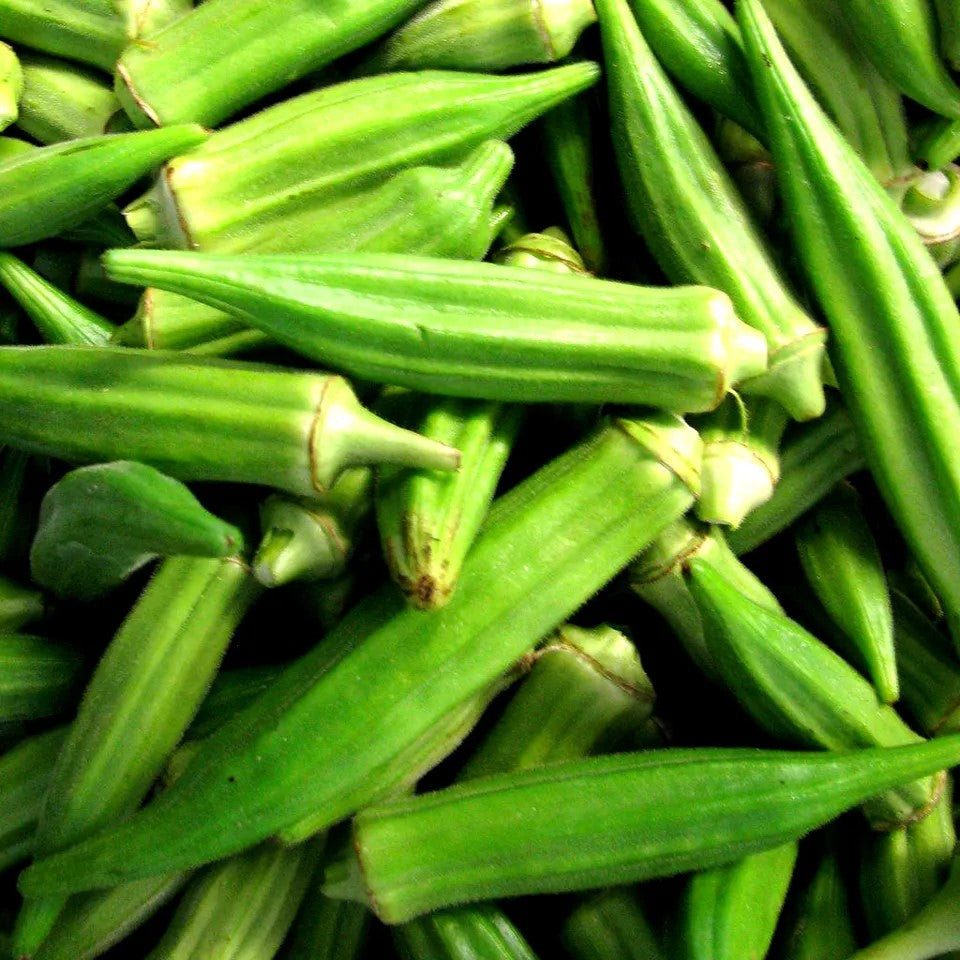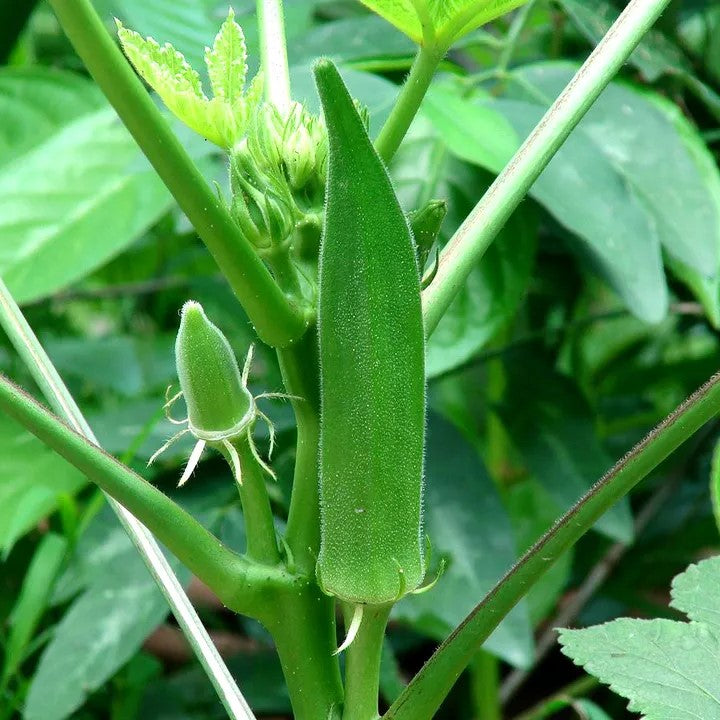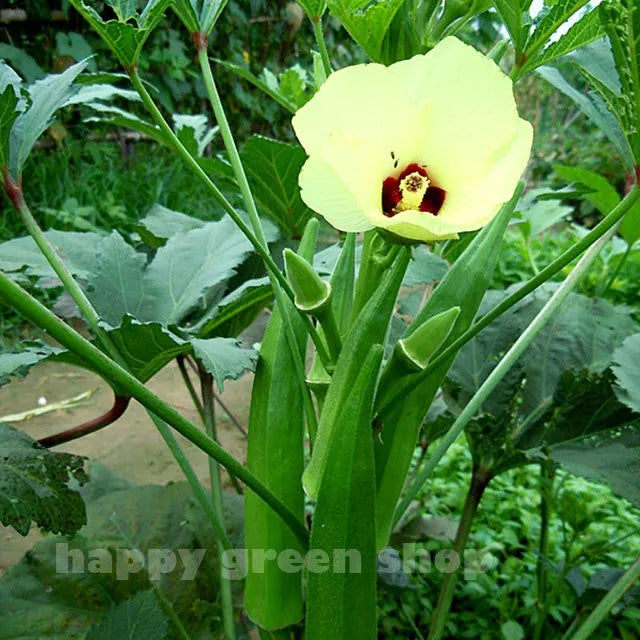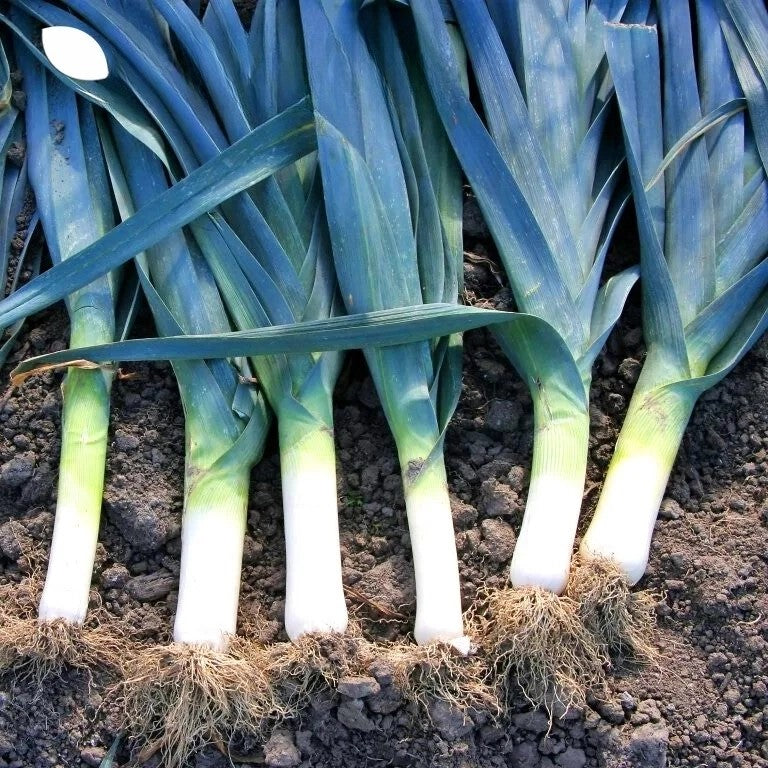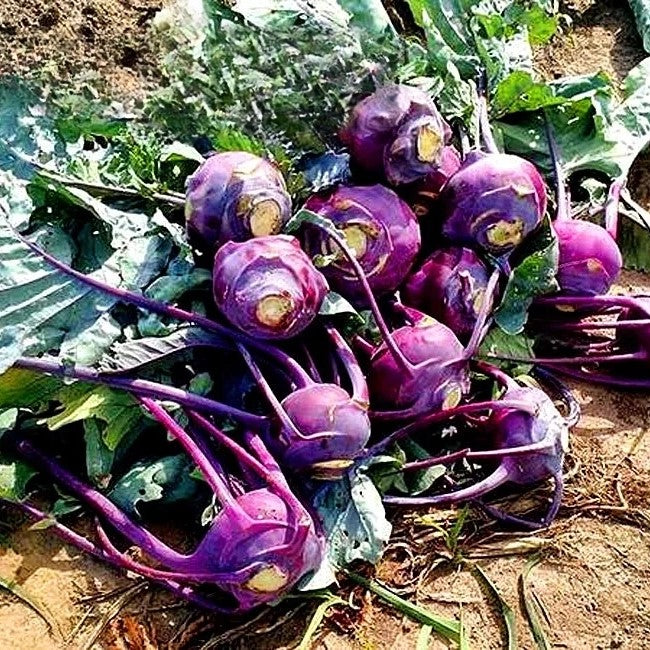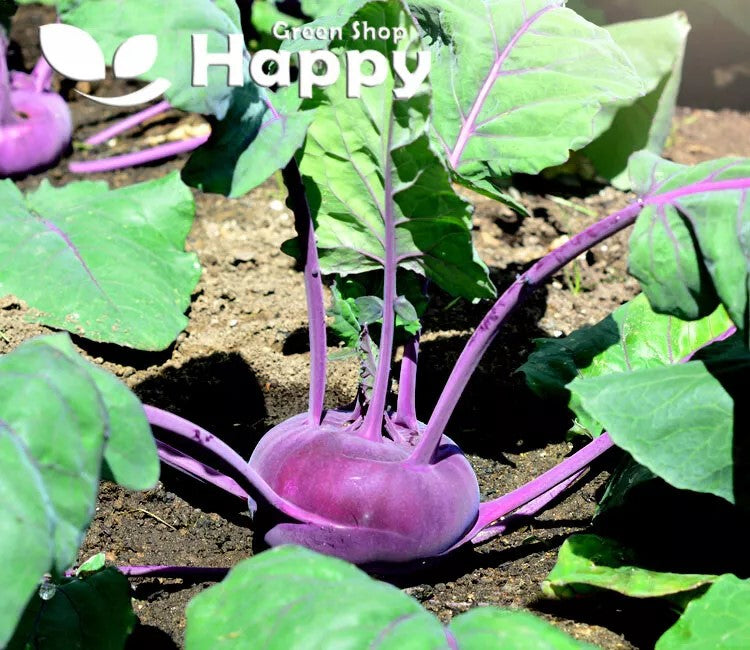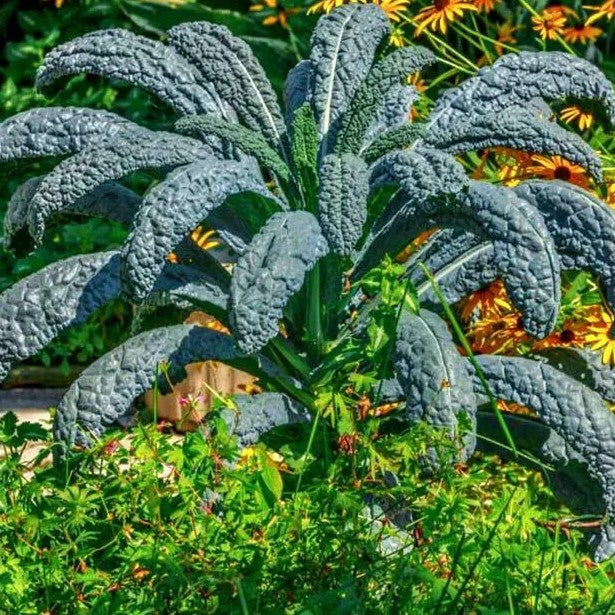Sort by:
52 products
52 products
Pumpkin 'Golias' – Seeds
(Cucurbita pepo) – Giant, Decorative & Edible Pumpkin
Pumpkin 'Golias' is an impressive giant pumpkin variety, producing extra-large, round fruits with smooth orange skin. Known for its huge size and vigorous growth, it makes a real garden showpiece while also being delicious in soups, bakes, and pies. Perfect for competitions, carving, or autumn displays.
Key Features
-
Type: Annual fruiting vegetable
-
Fruit size: Extra-large, giant pumpkins
-
Skin: Smooth orange
-
Flavor: Mild, sweet flesh suitable for cooking
-
Harvest: Late summer to autumn
-
Use: Cooking, carving, decoration, competitions
Ideal For
-
Giant vegetable growing
-
Autumn harvest festivals & carving
-
Cooking soups, pies, and bakes
-
Impressive garden displays
Sowing & Growing
-
Sow indoors: April–May, 2–3 cm deep in pots.
-
Transplant outdoors: Late May–June, after last frost.
-
Direct sowing: From mid-May, 2–3 cm deep.
-
Spacing: 1–1.5 m between plants.
-
Soil: Rich, fertile, well-drained with compost/manure.
-
Harvest: September–October, when skins harden.
Care Tips
-
Requires full sun and plenty of water.
-
Feed regularly for maximum fruit size.
-
Protect from frost – harvest before first frost arrives.
Patty Pan 'Custard White' – Seeds (Cucurbita pepo)
The Patty Pan 'Custard White' is a striking summer squash variety producing creamy white, scalloped fruits with a tender texture and mild, nutty flavor. These unique squashes can be harvested young for grilling, steaming, and stir-fries or left to mature for stuffing and baking. Both ornamental and delicious, they add variety to your kitchen garden and your plate.
How to Grow
-
Sow seeds indoors from April or directly outdoors from May once the soil has warmed.
-
Plant 2–3 seeds per hole, 2 cm deep, thinning to the strongest seedling.
-
Space plants 60–90 cm apart in sunny, fertile soil.
-
Water regularly and feed for a steady crop.
Key Features
-
Distinctive white, scalloped fruits
-
Tender flesh with mild, nutty flavor
-
Harvest young or mature depending on use
-
Highly productive and ornamental
-
Versatile for grilling, baking, or stuffing
Ideal For
-
Summer vegetable gardens
-
Home cooks seeking versatile squash
-
Decorative harvest baskets and kitchen displays
Sowing & Harvest
-
Sow: April to June
-
Harvest: July to October
Quick Tip
-
Harvest fruits when small and tender for the best flavor and a continuous crop.
Parsnip Root 'Kamo' – Seeds
(Pastinaca sativa) – Sweet, Nutritious Root Vegetable
Parsnip 'Kamo' is a reliable, high-yielding variety producing long, smooth, tapered roots with creamy-white skin and sweet, nutty flavor. Its roots become even sweeter after the first frosts, making it a classic for autumn and winter harvests. Excellent for roasting, mashing, soups, and stews, parsnips are rich in vitamins, minerals, and dietary fiber.
Key Features
-
Type: Hardy biennial grown as annual root crop
-
Root size: Long, tapered, smooth
-
Flavor: Sweet, nutty – improves after frost
-
Harvest: Late autumn to winter
-
Use: Roasting, mashing, soups, stews
Ideal For
-
Traditional vegetable gardens
-
Winter kitchen harvests
-
Nutrient-rich root storage
-
Roasting & hearty seasonal dishes
Sowing & Growing
-
Sow outdoors: March–May, directly into prepared seed beds.
-
Depth: 1 cm, in rows 30–40 cm apart.
-
Germination: 14–28 days at 8–18°C.
-
Thinning: 10–15 cm between plants.
-
Soil: Deep, loose, stone-free, fertile soil.
-
Harvest: October–February (roots store in the ground).
Care Tips
-
Do not sow in freshly manured soil (may cause forking).
-
Slow to germinate – keep soil consistently moist.
-
Leave roots in the ground over winter for best flavor.
Onion Tosca – 80 Seeds (Allium cepa)
Description:
Grow flavorful, versatile onions with Onion Tosca (Allium cepa). This high-quality variety produces medium-sized, firm bulbs with a mild, slightly sweet taste. Ideal for salads, cooking, and pickling, Tosca onions are easy to grow from seed and suitable for kitchen gardens, raised beds, and allotments. Resistant to common diseases, they offer reliable harvests throughout the season.
Key Features
-
Medium-sized, firm bulbs with mild, sweet flavor
-
Suitable for salads, cooking, and pickling
-
Disease-resistant and reliable variety
-
Easy to grow from seed
-
Ideal for home and small-scale gardens
Ideal For
-
Kitchen gardens and raised beds
-
Culinary use: raw, cooked, or pickled
-
Allotments and small vegetable plots
-
Home gardeners seeking reliable onions
Sowing & Growing
-
Sow Indoors: February–March
-
Transplant Outdoors: April–May, after frost
-
Germination: 10–14 days at 15–20°C
-
Spacing: 10–15 cm apart in rows 25–30 cm apart
-
Height: 30–40 cm
-
Light: Full sun
-
Soil: Fertile, well-drained, rich in organic matter
Care Tips
-
Water regularly but avoid waterlogging
-
Thin seedlings to prevent overcrowding
-
Fertilize lightly during growth
-
Harvest when bulbs are firm and tops begin to yellow
Okra 'Clemson Spineless' – Seeds (Abelmoschus esculentus)
Okra 'Clemson Spineless' is the most popular and widely grown okra variety, prized for its tender, spineless green pods and high yields. A warm-season crop, it thrives in sunny conditions and produces long, slim pods that are perfect for frying, grilling, soups, curries, and traditional gumbo dishes. Compact and productive, it’s ideal for home gardens or allotments.
How to Grow
-
Sow indoors: March – May in pots or modules with heat.
-
Transplant outdoors: After last frost when soil has warmed.
-
Soil: Fertile, well-drained soil in full sun.
-
Spacing: 30–45 cm apart.
-
Water regularly during dry spells to encourage pod production.
Key Features
-
Famous spineless okra variety
-
High-yielding and fast-growing
-
Tender, slim pods with rich flavor
-
Heat-loving annual for summer harvests
-
Perfect for gumbo, curries, soups, and frying
Ideal For
-
Kitchen gardens and allotments
-
Sunny, sheltered growing positions
-
Gardeners who enjoy exotic vegetables
Sowing & Harvest
-
Sow: March – May
-
Harvest: July – October
Quick Tip
Harvest pods when young (7–10 cm long) for the best flavor and tenderness. Picking regularly encourages further production.
Leek ‘Titus’ – 800 Seeds (Allium porrum)
Description:
Grow tender, flavorful leeks with Leek ‘Titus’ (Allium porrum). This hardy variety produces long, thick, light-green stems with a mild onion-like flavor, ideal for soups, stews, and roasting. ‘Titus’ is resistant to bolting and can be sown early for spring or autumn harvests. Perfect for kitchen gardens, raised beds, or allotments, it’s an easy-to-grow variety suitable for both home gardeners and small-scale growers.
Key Features
-
Long, thick, mild-flavored stems
-
Hardy variety resistant to bolting
-
Suitable for early spring and autumn harvest
-
Ideal for culinary use: soups, stews, roasting
-
Easy to grow from seed
Ideal For
-
Kitchen gardens and allotments
-
Raised beds and vegetable borders
-
Culinary use in soups, stews, and roasted dishes
-
Home gardeners seeking reliable leek harvests
Sowing & Growing
-
Sow Indoors: January–March
-
Transplant Outdoors: March–May
-
Germination: 10–14 days at 15–20°C
-
Spacing: 10–15 cm apart in rows 30–40 cm apart
-
Height: 40–50 cm
-
Light: Full sun
-
Soil: Fertile, well-drained, rich in organic matter
Care Tips
-
Water regularly, especially during dry periods
-
Hill soil around stems to blanch and promote tender growth
-
Fertilize lightly with balanced fertilizer during growth
-
Harvest when stems reach desired thickness
Kohlrabi 'Violeta' – Seeds (Brassica oleracea)
Kohlrabi 'Violeta' is a striking purple-skinned variety with crisp, white flesh and a sweet, nutty taste. Its unique color and mild flavor make it an excellent addition to both the garden and the kitchen. Perfect eaten raw in salads, grated into slaws, or lightly cooked in stir-fries, soups, and roasts.
This fast-growing crop is hardy, reliable, and suitable for multiple sowings throughout the season. Compact plants make it an ideal choice for small gardens, raised beds, or containers.
How to Grow
-
Sow indoors/outdoors: March – July
-
Depth: 1 cm
-
Spacing: 20–25 cm between plants, 30 cm between rows
-
Position: Full sun or partial shade
-
Soil: Moist, fertile, well-drained soil
-
Watering: Keep soil evenly moist to prevent woodiness and splitting
Key Features
-
Vibrant purple variety with sweet, crisp white flesh
-
Delicious raw or cooked – versatile in salads, stir-fries, and roasts
-
Fast-growing and suitable for repeat sowings
-
Compact plants – ideal for small gardens and containers
-
Attractive crop with ornamental value in the vegetable patch
Harvest
-
Harvesting period: May – October
-
Pick when bulbs reach 5–8 cm in diameter for the best flavor and texture.
Short Tip
For tender bulbs, avoid letting plants become oversized – harvest regularly.
Kale Borecole 'Black Tuscan' – Seeds (Nero di Toscana)
Kale Borecole 'Black Tuscan' is a striking, dark-green to almost black leafy kale with deeply wrinkled leaves and a rich, earthy flavor. Also known as Nero di Toscana, this traditional Italian kale is perfect for soups, sautés, salads, and healthy smoothies.
Its hardy, frost-tolerant nature makes it ideal for cool-season gardening, and its dramatic foliage adds both culinary and ornamental value to vegetable beds.
How to Grow
-
Sow indoors: February – April
-
Sow outdoors: March – May
-
Plant spacing: 30–40 cm between plants
-
Position: Full sun to partial shade
-
Soil: Fertile, well-drained soil enriched with compost
-
Care: Water consistently; mulch to retain moisture; remove yellowing leaves to encourage growth
Key Features
-
Deep green, wrinkled leaves with rich, earthy flavor
-
Frost-hardy and suitable for cool-season growing
-
Perfect for soups, sautés, salads, and smoothies
-
Ornamental and culinary value in vegetable gardens
-
High-yielding and easy to cultivate
Harvest
-
Harvesting period: 60–90 days after sowing
-
Pick outer leaves regularly for continuous harvest; leaves improve in flavor after light frost.
Short Tip
Harvest leaves from the bottom up and after a light frost for the sweetest, most tender flavor.
Indian Corn ‘Flint’ – Seeds (Zea mays)
Indian Corn ‘Flint’ (Zea mays) is a decorative maize variety prized for its multicolored kernels, ranging from deep reds and purples to golds and blues. Ideal for autumn displays, harvest decorations, and ornamental garden planting, this hardy annual also produces tall, striking stalks that add vertical interest to your garden. Easy to grow in fertile, well-drained soil, it’s a perfect combination of beauty and traditional charm.
Why Grow "Flint"
-
Multicolored kernels for decorative harvest displays
-
Tall, striking stalks for vertical interest in the garden
-
Hardy and easy-to-grow annual
-
Perfect for ornamental planting and autumn decoration
Key Features
-
Type: Annual (Zea mays)
-
Height: 150–200 cm
-
Flowering/Fruiting: Summer to early autumn
-
Position: Full sun
-
Uses: Ornamental garden planting, autumn décor, harvest displays
Ideal For
-
Autumn garden color and harvest decorations
-
Tall vertical interest in borders or vegetable plots
-
Educational planting and children’s gardens
-
Ornamental and pollinator-friendly garden displays
Sowing & Growing
-
Sow outdoors: April–May directly in fertile soil
-
Germination: 7–14 days at 20–25°C
-
Space plants: 25–30 cm apart in rows 60–75 cm apart
-
Prefers fertile, well-drained soil in full sun
-
Water regularly until established
Showing 36/52


